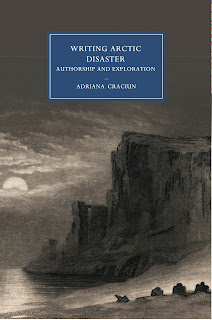Lines in the Ice

Lines in the Ice: Exploring the Roof of the World by Philip Hatfield Montréal and Kingston: McGill-Queen's University Press, 2016 Reviewed by Russell A. Potter Over the years, the staff here at the Arctic Book Review have seen more than our share of large-format pictorial books about the Arctic, its explorers, and inhabitants. Yet until now, no single book has so richly brought together all the historical, cultural, and geographical aspects of the frozen zone in quite the way that Philip Hatfield's Lines in the Ice manages. From Hakluyt's charts in the sixteenth century to the very latest in digital maps, we see here, in panoramic procession, the full panoply of our predilection with the Earth's vast, yet far from trackless northern regions. Part of this is by design; the book is, in essence, an extended, expanded catalogue of an exhibition of the same name at the British Library, whose resources in this, as in other areas of visual culture, are enormous. The differe...





